Abstract
1 The effects of fluvoxamine to a maximum of 300 mg daily were compared with those of imipramine to a maximum of 200 mg daily, in 151 patients with primary major depression.
2 Four weeks of treatment with fluvoxamine resulted in 67.2% improvement (± s.d. 21.6) on the Hamilton Rating Scale for Depression (26 items). Treatment with imipramine showed 62.1% improvement (± s.d. 29.5) on this scale.
3 Fluvoxamine had no untoward effects on the cardiovascular system, while imipramine produced systematic increases in the postural fall in blood pressure. Dry mouth, nausea, daytime somnolence and tremor were seen with fluvoxamine treatment, while imipramine was associated with dry mouth, daytime somnolence, dizziness and tremor.
4 We conclude that fluvoxamine seems to have the same general antidepressant efficacy as imipramine. It was not associated with any safety problems and was generally well tolerated.
Full text
PDF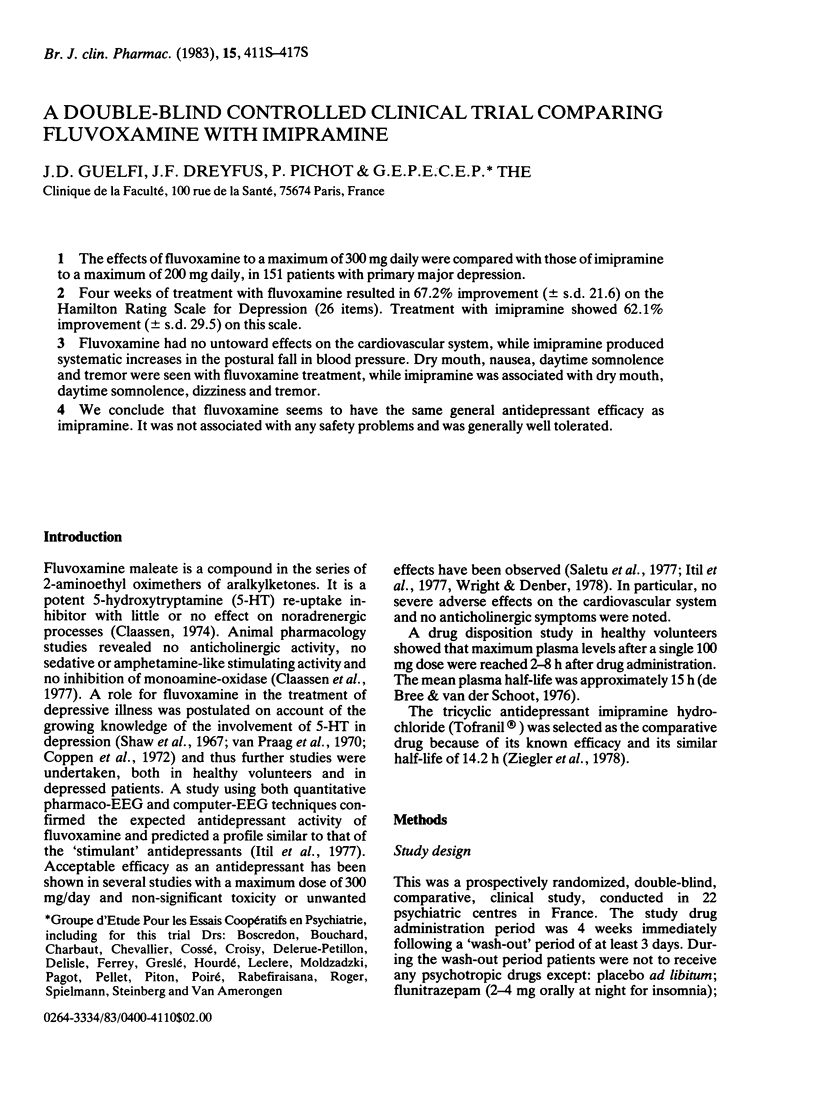
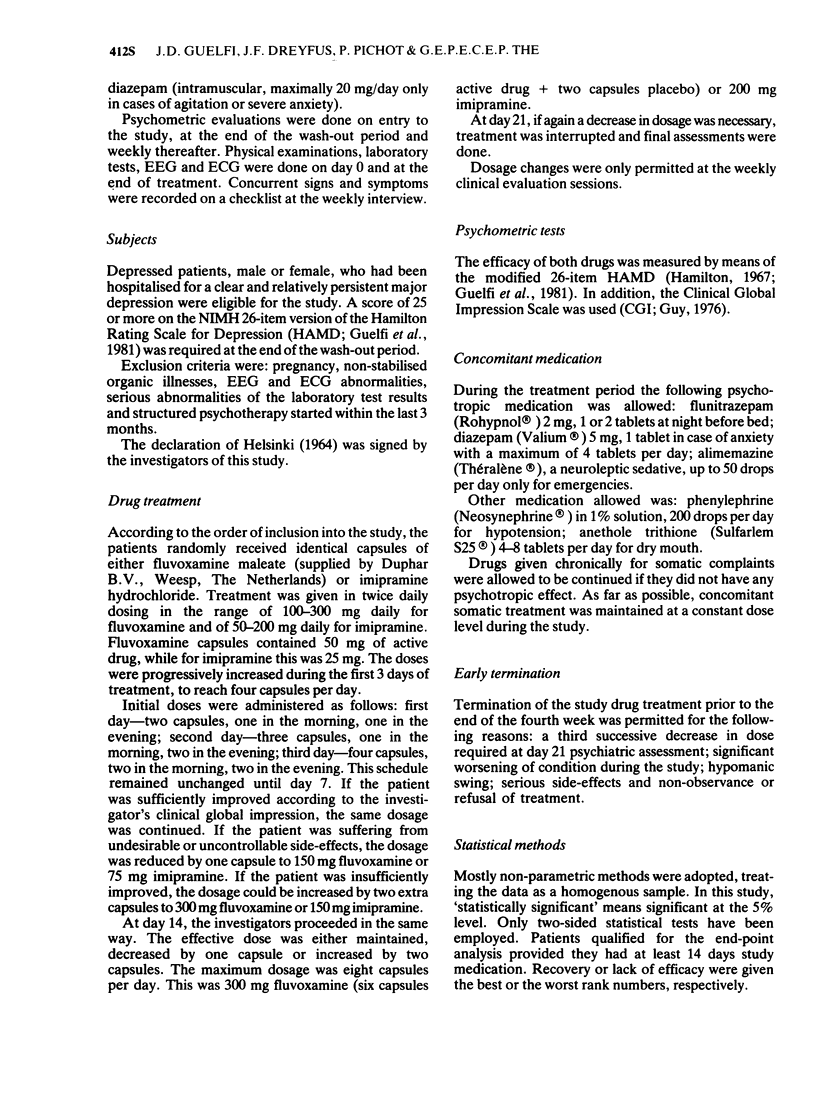
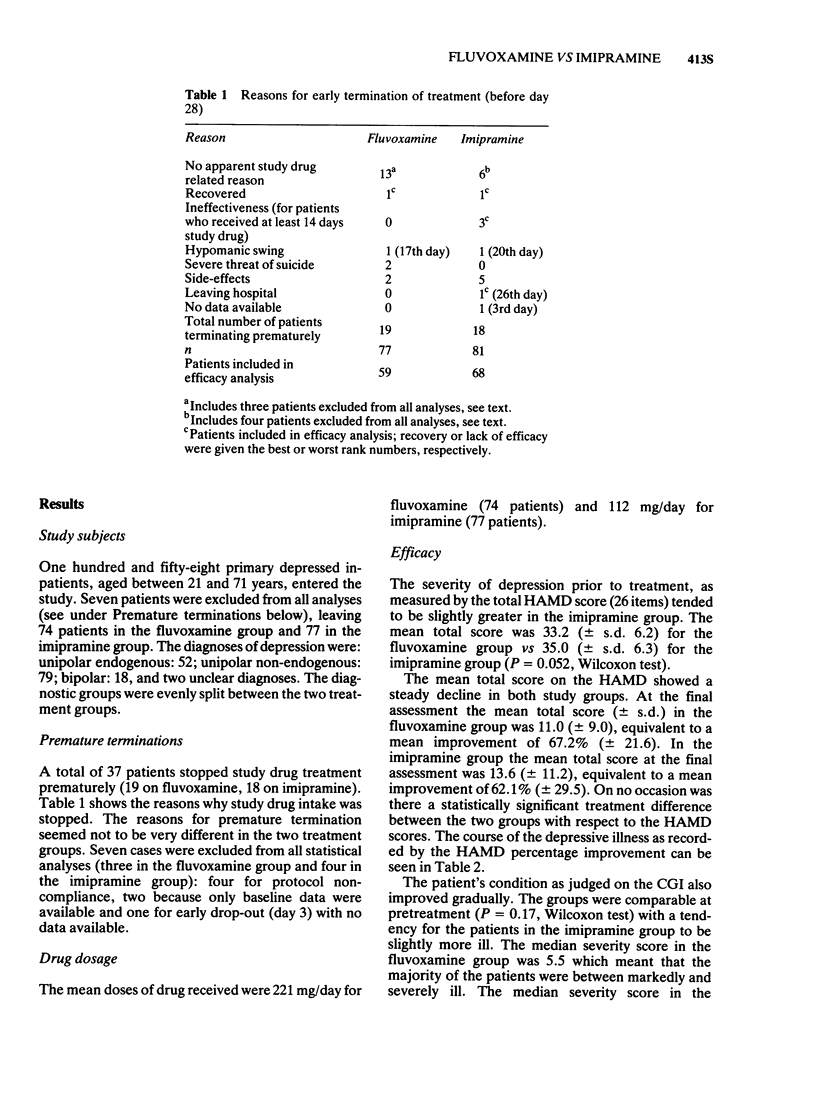
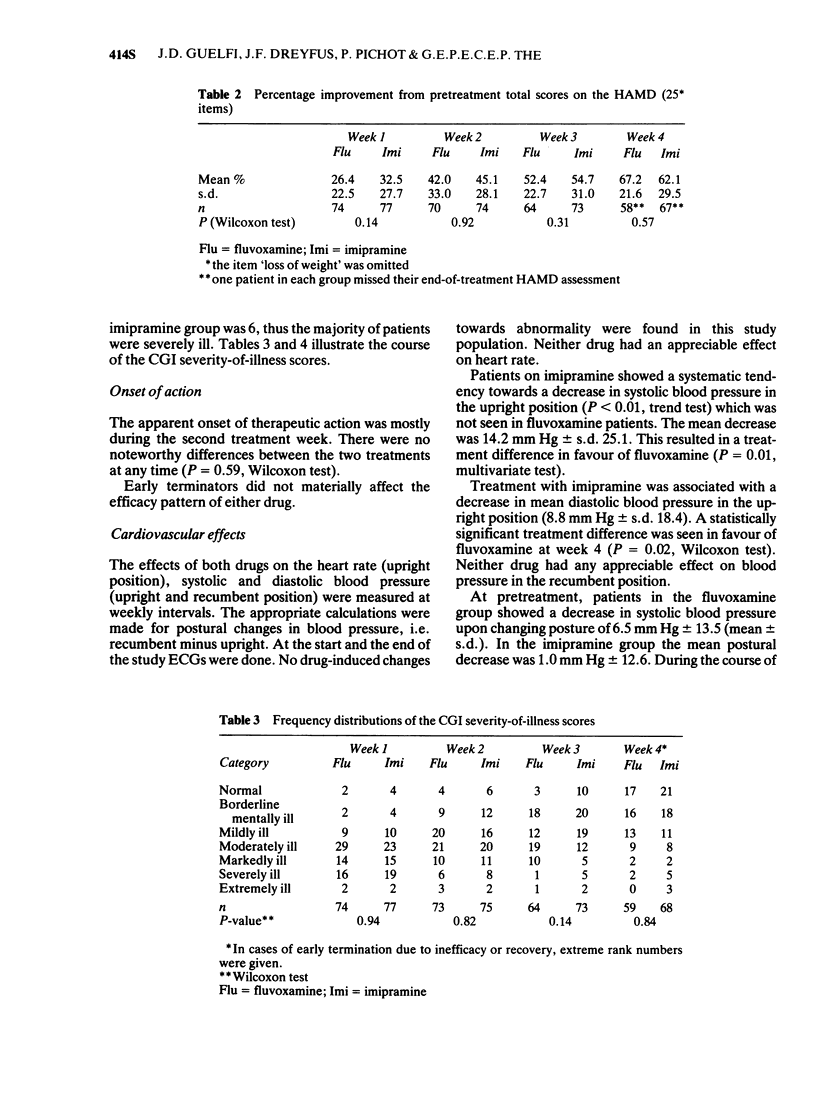
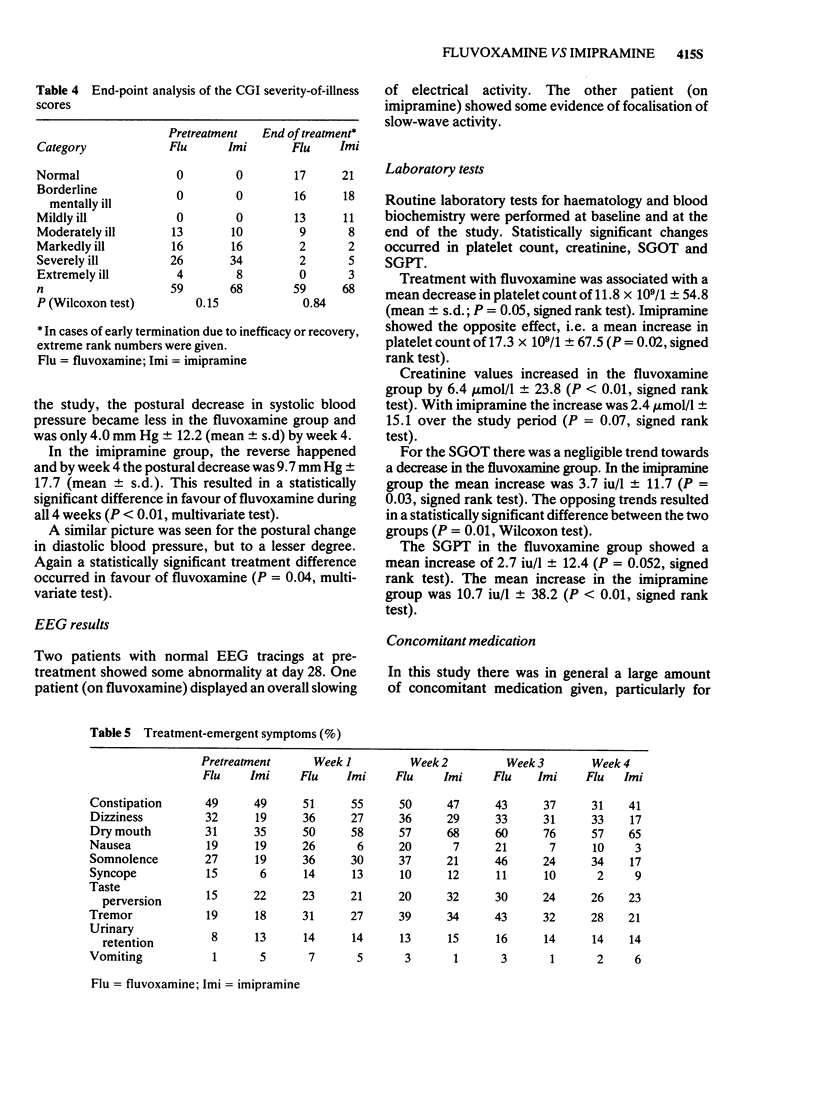
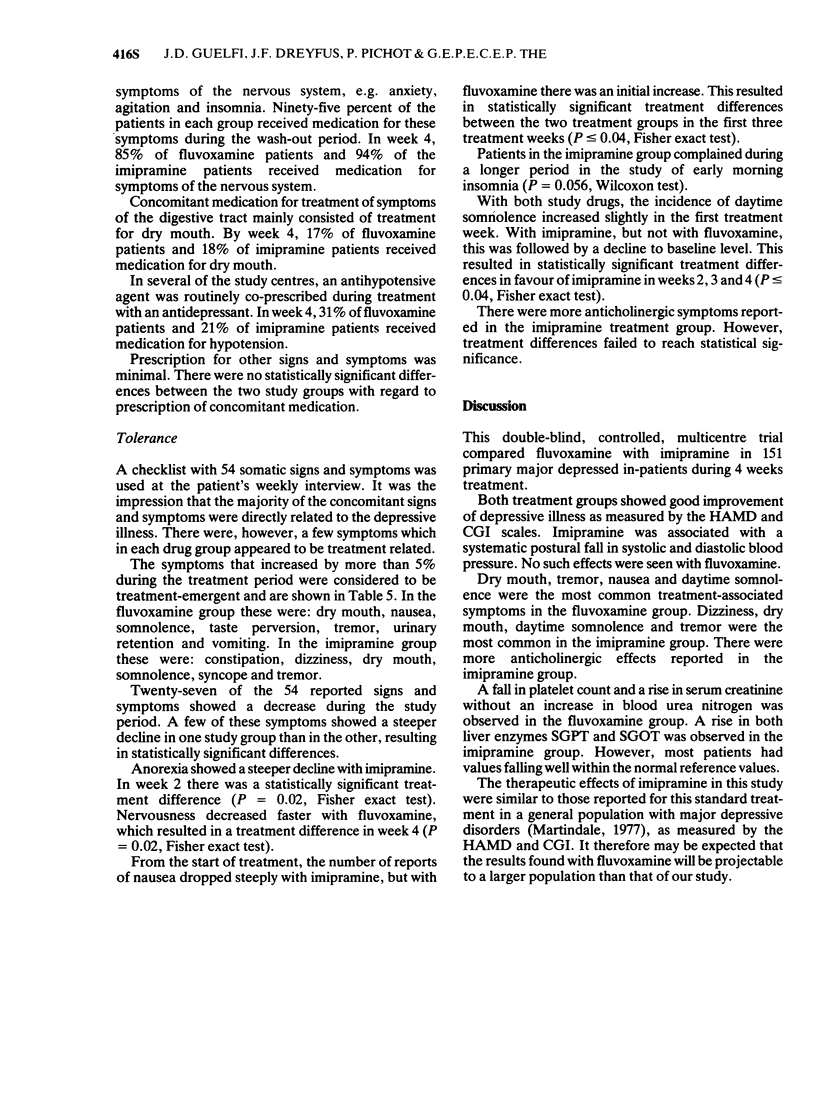
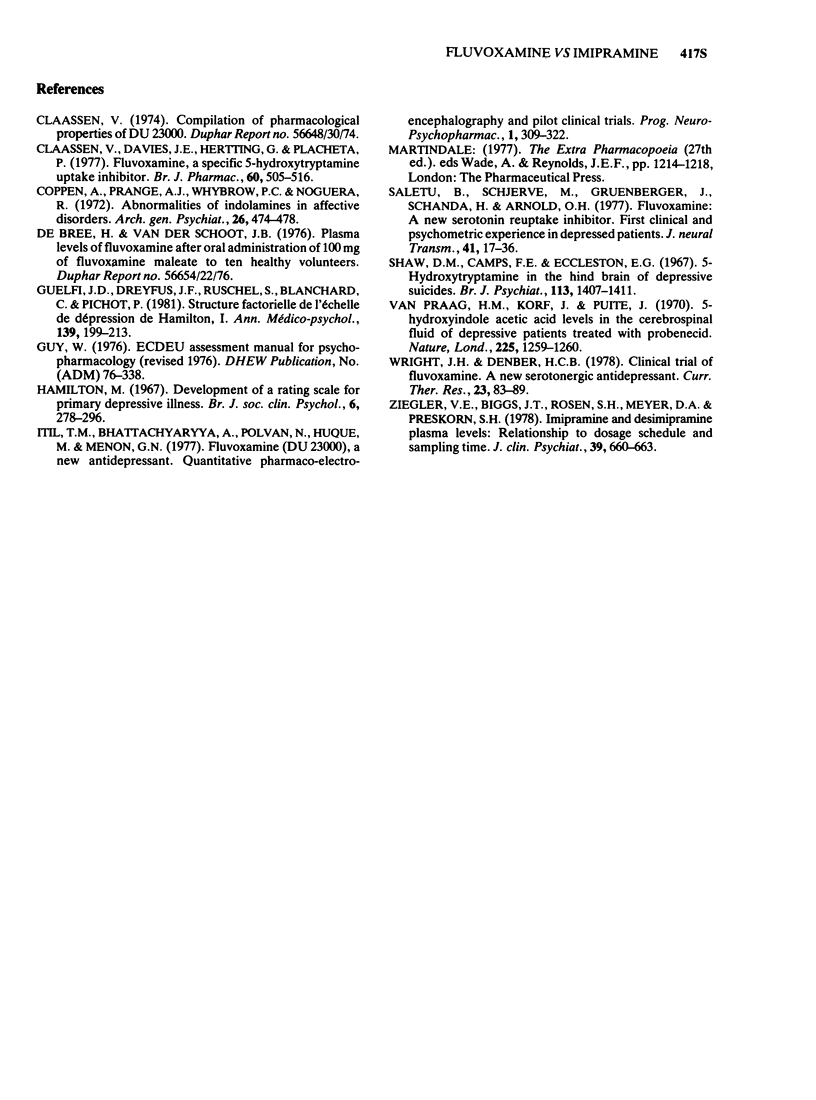
Selected References
These references are in PubMed. This may not be the complete list of references from this article.
- Claassen V., Davies J. E., Hertting G., Placheta P. Fluvoxamine, a specific 5-hydroxytryptamine uptake inhibitor. Br J Pharmacol. 1977 Aug;60(4):505–516. doi: 10.1111/j.1476-5381.1977.tb07528.x. [DOI] [PMC free article] [PubMed] [Google Scholar]
- Coppen A., Prange A. J., Jr, Whybrow P. C., Noguera R. Abnormalities of indoleamines in affective disorders. Arch Gen Psychiatry. 1972 May;26(5):474–478. doi: 10.1001/archpsyc.1972.01750230084016. [DOI] [PubMed] [Google Scholar]
- Guelfi J. D., Dreyfus J. F., Ruschel S., Blanchard C., Pichot P. Structure fractorielle de I'échelle de dépression de Hamilton. I. Ann Med Psychol (Paris) 1981 Feb;139(2):199–214. [PubMed] [Google Scholar]
- Hamilton M. Development of a rating scale for primary depressive illness. Br J Soc Clin Psychol. 1967 Dec;6(4):278–296. doi: 10.1111/j.2044-8260.1967.tb00530.x. [DOI] [PubMed] [Google Scholar]
- Saletu B., Schjerve M., Grünberger J., Schanda H., Arnold O. H. Fluvoxamine-a new serotonin re-uptake inhibitor: first clinical and psychometric experiences in depressed patients. J Neural Transm. 1977;41(1):17–36. doi: 10.1007/BF01252962. [DOI] [PubMed] [Google Scholar]
- Shaw D. M., Camps F. E., Eccleston E. G. 5-Hydroxytryptamine in the hind-brain of depressive suicides. Br J Psychiatry. 1967 Dec;113(505):1407–1411. doi: 10.1192/bjp.113.505.1407. [DOI] [PubMed] [Google Scholar]
- Ziegler V. E., Biggs J. T., Rosen S. H., Meyer D. A., Preskorn S. H. Imipramine and desipramine plasma levels: relationship to dosage schedule and sampling time. J Clin Psychiatry. 1978 Aug;39(8):660–663. [PubMed] [Google Scholar]
- van Praag H. M., Korf J., Puite J. 5-Hydroxyindoleacetic acid levels in the cerebrospinal fluid of depressive patients treated with probenecid. Nature. 1970 Mar 28;225(5239):1259–1260. doi: 10.1038/2251259b0. [DOI] [PubMed] [Google Scholar]


